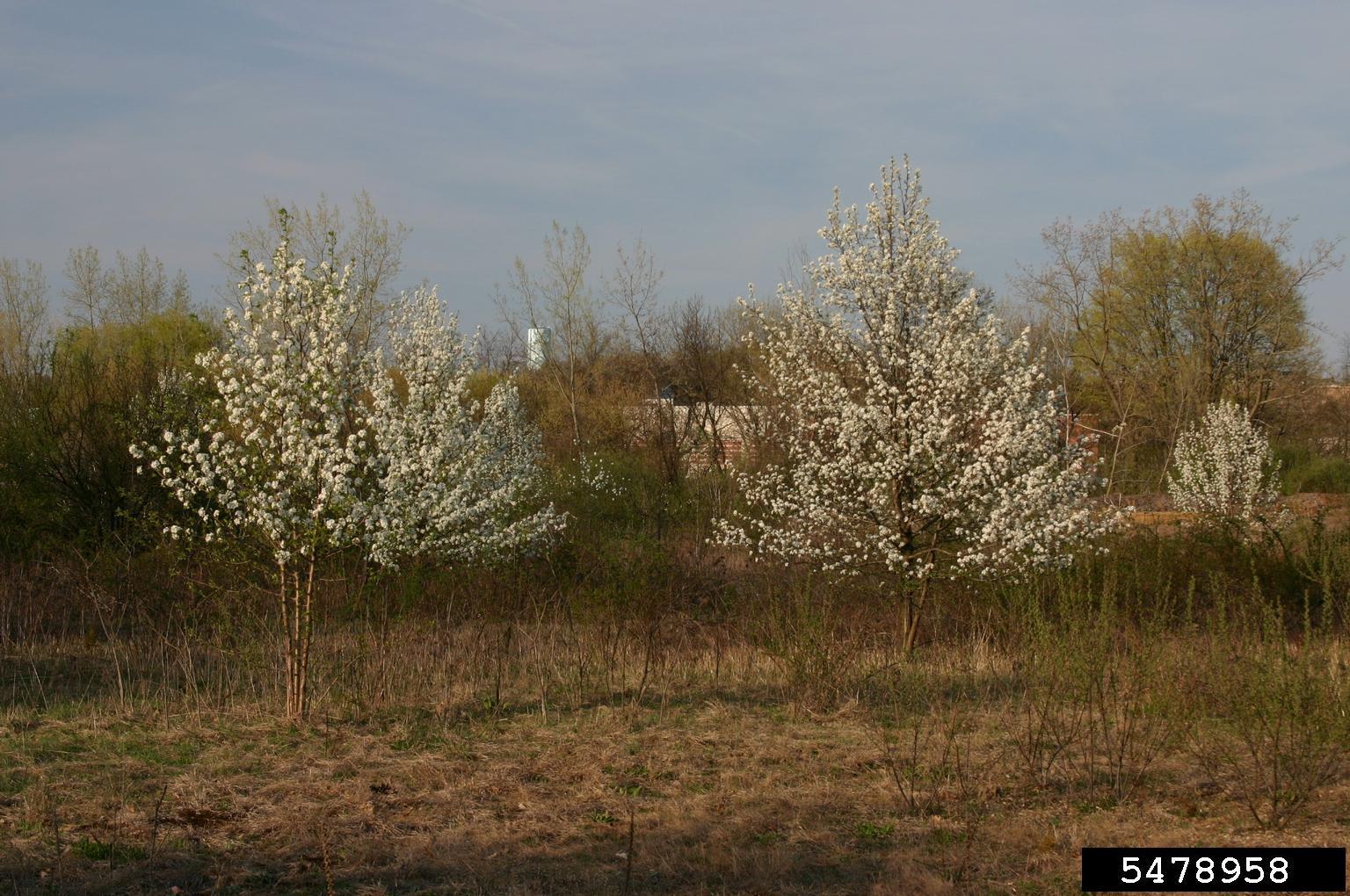About 'Bradford' pear or callery pear (Pyrus calleryana 'Bradford')
Life cycle and background
No longer a recommended tree for planting, it is highly invasive.
A deciduous tree bearing clusters of white flowers in early spring. One of the first spring trees to bloom in Maryland. ‘Bradford’ is a very common cultivar of Callery pear. Its rapid growth, dense foliage, and a profusion of flowers made it a highly desirable tree for landscapes and it was planted widely. Forms dense, thorny thickets in wild areas; out-competes and prevents the growth of native plants such as Eastern redbud (Cercis canadensis) and serviceberry (Amalanchier canadensis).
Growth habit
Fast growing and invasive. Trees grow 30’-50’ tall and 20’30’ wide. White flowers consisting of 5 petals grouped in clusters. Leaves are simple, alternate along stems, heart-shaped to oval, finely round-toothed along the edge, shiny and leathery. Bark on mature trees is gray-brown with shallow furrows. New stems are smooth, reddish-brown. Produces thorns. Branch structure makes it very susceptible to breakage in storms. Small round greenish-brown fruits are produced in late-spring/summer.
Reproduction
Seeds are dispersed by birds and small animals that eat the fruits. The original ‘Bradford’ pear was introduced in Maryland and was self-sterile (unable to receive pollen from the same cultivar). Now it cross-pollinates with many other non-sterile callery pears and produces viable seeds.


Conditions that favor growth
Grows in a wide range of soil conditions. Prefers full sun and tolerates partial shade. Very common along highways and roadsides, disturbed woodlands, and old fields. No longer recommended as a street tree.
What to plant instead
Eastern redbud (Cercis canadensis), Fringetree (Chionanthus virginicus), Serviceberry (Amelanchier sp.), Flowering dogwood (Cornus florida)
Invasive Plants to Avoid Buying for your Yard and Garden in Maryland
Controlling Bradford (Callery) pear
Additional resources
Kaufman, Sylvan Ramsey & Wallace Kaufman. 2007. Invasive Plants: Guide to Identification and the Impacts and Control of Common North American Species
Swearingen J., K. Reshetiloff, B. Slattery, and S. Zwicker. 2002. Plant Invaders of Mid-Atlantic Natural Areas. National Park Service and U.S. Fish & Wildlife Service, Washington, DC.
Compiled by Christa Carignan, reviewed by Debra Ricigliano, University of Maryland Extension, 4/2018
Still have a question? Contact us at Ask Extension.
